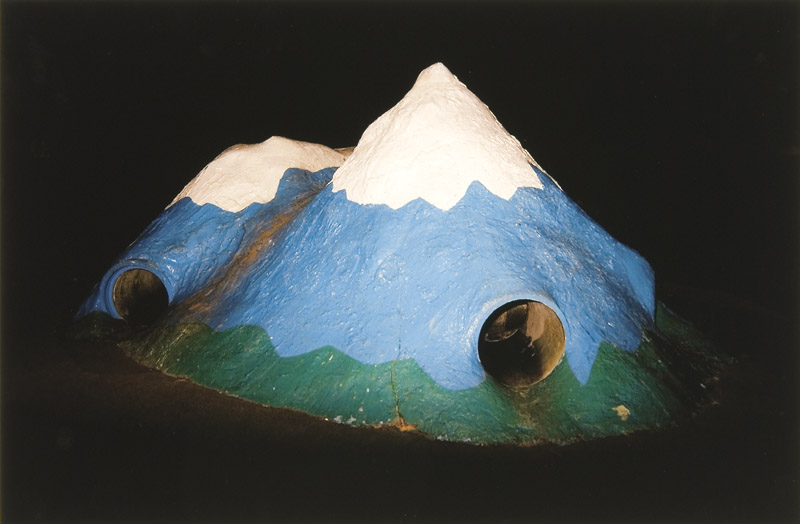Pale Rider
Leigh Mitchell-Anyon , Night sites #8, 2003, Epson inkjet prints on Archival Matte Heavyweight Paper. Collection of the Sarjeant Gallery Te Whare o Rehua Whanganui.
Pale Rider
26 September – 29 November 2015
Mount Taranaki has always been a symbol for me, growing up under its presence. This was reinforced by my father’s death when I was just over a year old. He was a keen mountaineer and his ashes were scattered on the mountain. Knowing this from a young age without ever knowing him, beyond photographs and stories, the mountain became a kind of totem. That threshold of knowledge and the unknown led me to blur myths with my own thoughts of him being taken up by the winds or down the waters that flow from the mountain across the land into the sea.
Working with the Sarjeant Gallery Collection over the last year and a half and living alongside the Whanganui River which shares myths with the mountains, I passed my father in age. The myth that resonates strongest with me is when Taranaki, after his defeat by Tongariro, gouges out the land as he heads towards the setting sun, his tears filling the deep scar left behind to become the Whanganui River. Those tears can become torrents with the recent flooding a reminder of nature’s power and unpredictability. Photographs by Frank Denton and Wayne Barrar show a flooded Whanganui in 1940 and 1990 respectively.
These thoughts formed my initial concept while developing this exhibition. I was drawn to works that try to explain the natural world and the knowable versus explorations into darkness and the unknown.
Tony Fomison had a strong relationship with Polynesian and Māori culture. He experienced Māori cave drawings during his archaeological work and a Samoan Pe’a (tattoo) adorned his body. Spirits and legends inhabit the New Zealand landscape in his lithographs. With the title Papatūānuku out in the cold waiting for the pines to go home I can’t help but think of the much covered American folk song ‘In the Pines’. The earliest printed version is just these four lines:
Black girl, black girl, don’t lie to me
Where did you stay last night?
I stayed in the pines where the sun never shines
And shivered when the cold wind blows
In versions of the Māori creation story, Papatūānuku (earth mother) is locked together with Ranginui (sky father) in a tight embrace. Their children live cramped in the darkness between them until their son Tāne (god of forests) prises them apart with his powerful legs, separating earth from sky and bringing light to the world. In these stories, Papatūānuku still yearns for the warmth of Ranginui.
The separation between earth and sky is prominent in the group of photographs by Laurence Aberhart taken from the Whanganui River mouth. The horizon appears as a neat line only broken by the silhouette of Mount Taranaki in the distance. Often shot in the fading light of dusk, a time linked with spiritual activity, the long exposures produce photographs that appear to have captured aeons of time.
Ben Davis
Collection Transition Assistant


